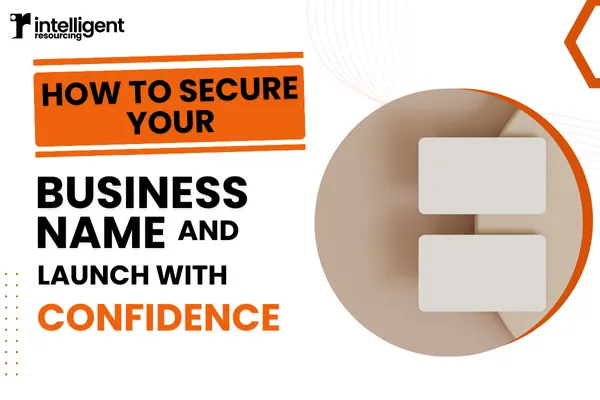
The Evolution of Business Registration: How to Register a Company in Australia Fast
Starting a business in Australia has never been easier. Two decades ago, company registration involved weeks of paperwork, accountant fees, and frustrating delays. Today, the process is almost instant—business owners can complete registration online in minutes and often for under $700.
Yet, many entrepreneurs still waste time and money on unnecessary steps, fail to register under the right structure, or overlook key compliance factors. Understanding the fastest, most efficient way to set up a business properly can save you from costly mistakes down the line.
This guide outlines the smartest approach to company registration in Australia, cutting through unnecessary upsells and ensuring a streamlined start to business operations.
Step 1: Choose a Business Name That Works for You
Your business name is more than just a label—it affects branding, SEO, and customer trust. A strong name should be:
✔ Memorable and easy to spell – A confusing or overly complex name makes marketing harder.
✔ Available – Conduct an ASIC business name search to check for duplicates.
✔ Legally protected – A registered name does not guarantee trademark protection. Use IP Australia to check for conflicts.
✔ Domain-friendly – If the matching .com.au domain isn’t available, securing your digital presence may become difficult.
A well-chosen business name sets the foundation for scalable growth. Businesses that align their brand with long-term workforce strategies from the start benefit from faster expansion and stronger operational efficiency.
Step 2: Register Your Company Online
Registering a company no longer requires accountants, legal experts, or excessive paperwork. The process is fully digital and can be completed through ASIC’s website or an authorised service provider.
What You Need for Registration:
Chosen business name
Company type (Sole Trader, Partnership, Pty Ltd, or Trust)
Business address
Director and shareholder details
Once submitted, you will receive an ACN (Australian Company Number) almost instantly, and your ABN (Australian Business Number) shortly after.
The right business structure impacts everything from tax obligations to long-term hiring flexibility. If scalability and cost-efficiency are priorities, leveraging offshore talent can significantly reduce operational expenses while maintaining full control over business processes.
Companies that streamline workforce integration early on operate more efficiently and scale without excessive overhead costs. Explore strategic workforce planning to build a cost-effective, high-performance team.
Step 3: Do You Need to Register for GST?
GST registration is mandatory if your annual revenue is expected to exceed $75,000. Even if you don’t reach this threshold immediately, early registration allows you to claim GST credits on business expenses, improving cash flow.
Common Misconceptions About GST:
🚫 "Only product-based businesses need GST." Service businesses must also register once revenue exceeds the limit.
🚫 "GST registration is complicated." The process is simple and can be completed alongside your ABN application.
🚫 "Small businesses don’t benefit from GST." If your business has high initial costs, registering can help recover expenses faster.
Businesses that prioritise financial efficiency from day one benefit from stronger cash flow and higher profit margins. The Australian Small Business Ombudsman provides guidance on tax compliance and financial structuring.
Step 4: Avoid Unnecessary Extras
Many registration services try to upsell non-essential items, leading new business owners to spend money on things they don’t actually need.
Common Unnecessary Add-ons:
Premium business certificates – ASIC provides free digital versions.
Compliance kits – No legal requirement to purchase a kit; digital records are sufficient.
Legal consultations – Most startups do not need legal support for basic registration.
What you do need is:
✔ ABN and ACN for official recognition
✔ A business bank account to separate finances
✔ Basic company documentation (easily stored digitally)
A business that removes unnecessary spending from the start can invest more effectively in revenue-generating activities. Structuring operations around lean financial management helps companies maintain strong cash flow.
Step 5: Submit and Finalise Registration
Once all details are entered, submit your application and wait for confirmation. In most cases, ASIC processes registrations within 24 hours.
With your business officially registered, you can begin trading, invoicing clients, and securing contracts immediately.
Why Fast Business Registration Matters
A slow registration process can stall momentum, delay marketing, and create unnecessary administrative stress. The sooner you formalise your business, the sooner you can:
✔ Secure your business name before competitors do
✔ Focus on marketing and sales instead of admin work
✔ Ensure compliance from day one
✔ Establish credibility with clients and suppliers
Long-term business success depends on efficient operations. Companies that streamline hiring, finances, and automation early gain a competitive edge. The right operational strategies can help businesses scale faster and more effectively.
What Comes Next?
Once your business is registered, securing operational stability is the next priority.
1. Open a Business Bank Account
Banks require:
ABN or ACN for verification
Registered business details
Director identification
Choosing a bank depends on fees, online banking capabilities, and integration with accounting software.
2. Set Up Business Insurance
Depending on your industry, you may need:
Professional Indemnity Insurance (for consultants and service providers)
Public Liability Insurance (for businesses dealing with customers in person)
Workers’ Compensation Insurance (if hiring employees)
The Australian Small Business Ombudsman provides detailed guidance on insurance requirements.
3. Establish a Compliance System
✔ Annual ASIC reviews to maintain registration
✔ BAS (Business Activity Statements) for GST reporting
✔ Payroll tax and superannuation setup if hiring staff
Key Takeaways
✔ Check business name availability and secure the domain early
✔ Register using online platforms for efficiency and cost savings
✔ Register for GST if revenue is expected to exceed $75,000
✔ Avoid unnecessary upsells and keep registration simple
Smart businesses focus on efficiency from the start. Structuring your workforce for cost-effectiveness and performance is critical. Companies that adopt scalable workforce strategies reduce overhead while ensuring long-term sustainability.
Final Thoughts
Registering a company in Australia is no longer a complex, slow process. With the right approach, business owners can complete registration in a matter of hours, allowing them to focus on growth instead of admin work.
🔗 Entrepreneurs who structure their operations strategically from day one gain a significant competitive advantage. Optimised business workflows ensure scalability, efficiency, and profitability.






